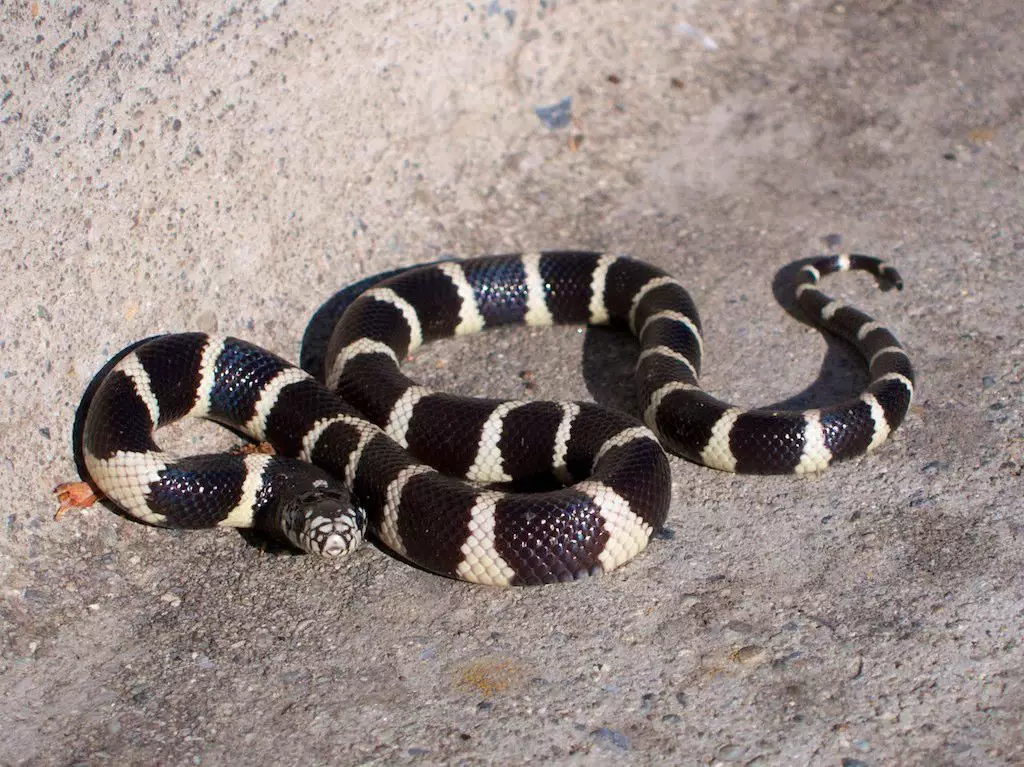Kingsnakes and milk snakes present themselves as fascinating prospects for both novice and experienced reptile enthusiasts. With their striking colors, gentle demeanor, and manageable care requirements, they stand out in the realm of pet snakes. However, keeping a snake isn’t just about admiration; it involves understanding their needs and habits to foster a healthy and enriching environment.
Captivating Colors and Patterns
Milk and kingsnakes, belonging to the Lampropeltis genus, thrive in diverse environments across southern Canada, the United States, and further into Central and South America. Over 45 species classify as kingsnakes, with milk snakes being a vibrant subset consisting of 25 distinct subspecies. These reptiles exhibit a kaleidoscope of colors and patterns that often mimic those of venomous counterparts, such as the coral snake. But this mimicry isn’t just for style; it serves as an evolutionary defense mechanism. Irrespective of the vivid aesthetics, aspiring snake owners should appreciate that this visual splendor requires careful consideration when selecting a specific breed.
A Perfect Pet for Beginners
With their docile nature and ease in handling, kingsnakes and milk snakes are often recommended for novice keepers. These snakes do not pose a significant risk of aggression and are unlikely to strike unless they mistake a finger for food. This gentle temperament makes them ideal for families or individuals new to snake ownership. The average adult grows to a length of 36 to 48 inches, and their life expectancy ranges from 20 to 30 years. Such longevity means that acquiring one of these snakes should be a well-considered commitment, as they can become lifelong companions.
An important aspect of handling these snakes involves patience and consistency. Initially, a new environment can cause stress, so it’s crucial to allow time for the snake to acclimatize before handling. Gradually building trust through daily short sessions can create a bond and make them more comfortable being handled. It’s worth noting that inexperienced handlers might inadvertently stress their snakes by attempting to handle them too soon or too often.
Creating the Ideal Habitat
A secure enclosure is paramount for kingsnakes and milk snakes. These clever escape artists can squeeze through the tiniest openings, making it essential that every potential escape route is sealed. A well-designed habitat not only keeps the snake safe but also enhances its well-being. Typically, younger snakes can thrive in a 10-gallon tank, while adults require a much larger space—typically 20 gallons or more—to allow for natural behaviors and minimize health risks.
Providing multiple hiding spots encourages natural behaviors and helps reduce stress. Materials like half rounds of bark or overturned pots can create cozy nooks for these snakes to retreat to when feeling insecure. Additionally, maintaining a proper thermal gradient—ensuring temperatures vary from 70 to 85 degrees Fahrenheit—is vital for their health since snakes are ectotherms that rely on their environment to regulate body temperature.
Nourishment and Health Maintenance
When it comes to diet, kingsnakes and milk snakes primarily consume rodents, with feeding practices varying depending on the snake’s age and size. Juveniles frequently require feedings twice a week, while adults can manage with weekly feedings. It’s recommended that snakes are fed prey items that are similar in size to their widest point for optimal digestion and satisfaction.
Furthermore, a common risk to their health is respiratory infections, often stemming from improper habitat conditions. Symptoms such as wheezing or excessive mucous can signal a serious health issue requiring prompt veterinary attention. Understanding the signs of distress and ensuring a proper habitat can mitigate many potential health risks.
Finding Your Perfect Pet
When considering adding a kingsnake or milk snake to your collection, do thorough research and seek reputable breeders, either at reptile expos or through community recommendations. Cost can vary greatly based on morph and rarity, with prices typically ranging from $30 to $200. Always inspect the health of the snake before purchase; indicators of a healthy specimen include a rounded body, clear eyes, and an active demeanor.
By committing to providing the proper care and environment, a kingsnake or milk snake can be an immensely rewarding pet. They offer a captivating glimpse into a world of reptilian beauty and behavior, making them more than just pets; they are companions that inspire curiosity and admiration.

